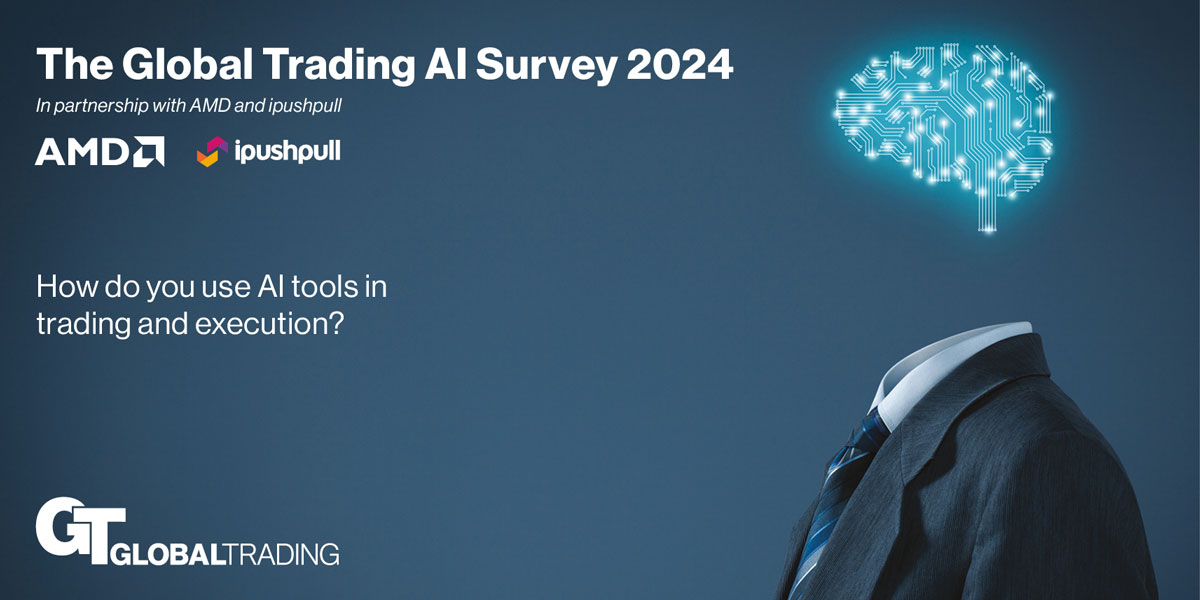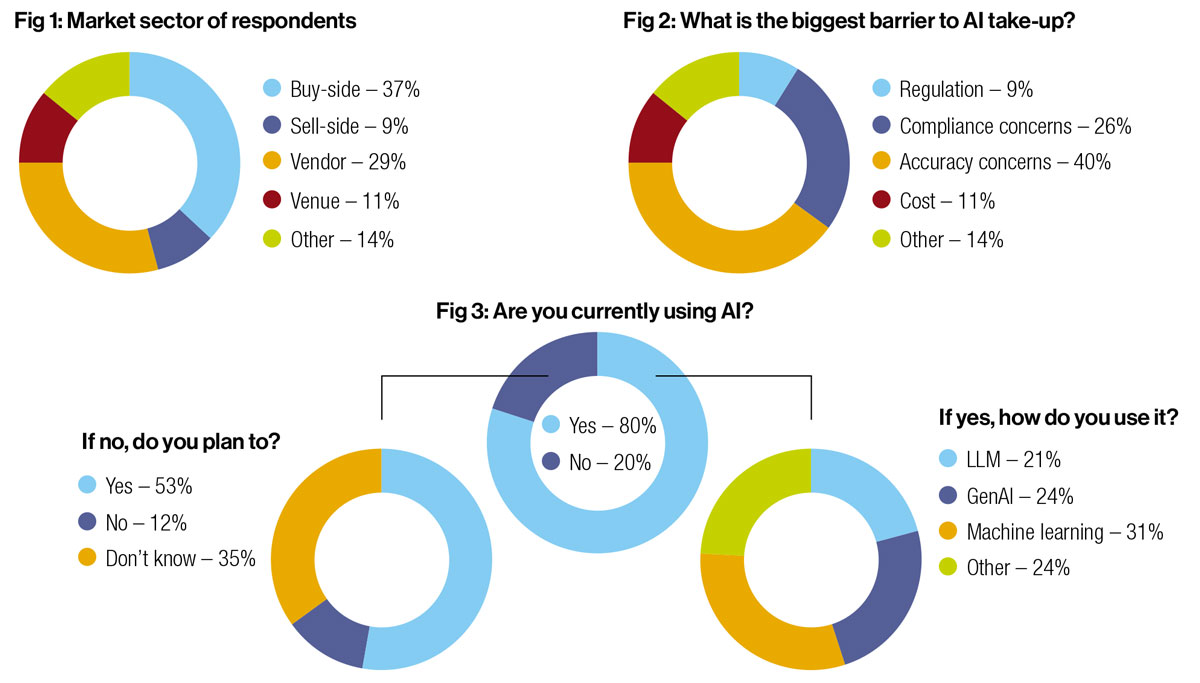
In our debut sentiment survey on the use of AI at the coalface of trading, the responses were overwhelmingly positive, with 80% already using AI in some form and 90% seeing it as a competitive advantage for the future. But concerns are already being raised around accuracy and compliance. Laurie McAughtry reports.
In partnership with AMD and ipushpull, Global Trading was pleased to launch its first ever AI sentiment survey in April of this year. Running for eight weeks, the survey gathered first-hand evidence from across the industry (including almost 40% buy-side) to learn just how traders are using artificial intelligence day-to-day, what their plans are for the future, where their concerns lie, and what this could mean for the evolution of the market.
A wide range of uses
A strong 80% of respondents already use AI in some capacity, with the most common function being through machine learning capabilities (31%), while generative AI (GenAI) came close with 24% and large language models (LLM) were used by 21%. Interestingly, 11% noted that they already used all three, of which 60% were buy-side.
Specific answers included a wide range of complex use cases in which AI is currently being used: including code generation and assistance; trading statistics; text processing; sentiment analysis; information extraction; investment stock selection; translation; research; market analysis; execution channel selection; optimising broker routing; AI-driven algo wheels; data calibration, data analysis and data mining; anomaly detection; surveillance; pre-trade models; pattern recognition and behaviour optimisation; and message parsing.
“We use it for content summarisation, generation, retrieval and aggregation,” added one buy-side respondent. However, some respondents issued a word of warning – “very few people use true AI. [We] primarily use it in the investment idea generation space” – while others were less enthusiastic about its potential usage. “We currently only use it for marketing and communications,” said a vendor.
Cautious confidence
Looking to the future, the majority of those that do not currently use AI (just under 20% of total respondents) have plans to introduce it in future, with 52% confirming their intention to invest. However, 11% remained resolutely against the idea, while 35% sat on the fence and were unsure as to their direction. “People will certainly start to use AI, but we need to improve our data standards first so that we can have confidence in it,” said one respondent.
However, out of total respondents, an overwhelming majority (94%) have plans to invest further into AI in the future, with just 6% swimming against the tide. Specified areas of planned investment include a new AI-driven research platform, increased coding assistance, data analysis, greater automation support of processes, a pre-trade optimisation function, and named entity recognition (NER – a type of natural language processing that identifies predefined categories of objects in a body of text).
Half (51%) thought that AI would be of most benefit in the areas of workflow efficiency and automation, while data management and analysis (24%) came second. Pattern recognition was also popular, while a few (4%) cited algo trading as a field that could benefit.

Accuracy concerns
It’s not all plain sailing, however. When it comes to concerns over the use of AI in trading, accuracy is at the top of the list, with 40% citing it as a barrier to uptake. Compliance came second with 26% – although interestingly, just 11% thought cost would be an issue and only 8% were worried about regulation inhibiting application. Data issues were brought up repeatedly, with numerous respondents asking: “Who owns the data?”
Other comments, however, related to human challenges rather than material barriers. “Inertia relating to existing methods,” said one, while “it’s hard to change human behaviours,” noted another. “Hammer to crack a nut,” thought a third: “Traditional analysis will do a sufficient job in most cases that people are talking about.”
“It should only be used in very specialist use cases where other options don’t provide a good result,” added another respondent.
Overall optimism
Overall, the sentiment was conclusively positive. Ninety one percent of respondents believed that the use of AI would give firms a competitive advantage, although with some caveats. “It’s not about AI per se, but about how well it is designed and applied,” said one venue.
“We need to sort out our data standards first to ensure that AI is effective,” said one respondent. “This is the ‘boring’ area but if we do not do this the AI will not give an ROI.”
“It’s [at an] early process in trading,” said another buy-side trader. “There is lots of branded AI algo but no significant different with the competition.”
However, the optimism is undeniable when it comes to future outlook.
“We’re only scratching the surface,” concluded a buy-side respondent. “The results from this survey a year from now will likely look very different.”
With thanks to AMD and ipushpull for their partnership.



